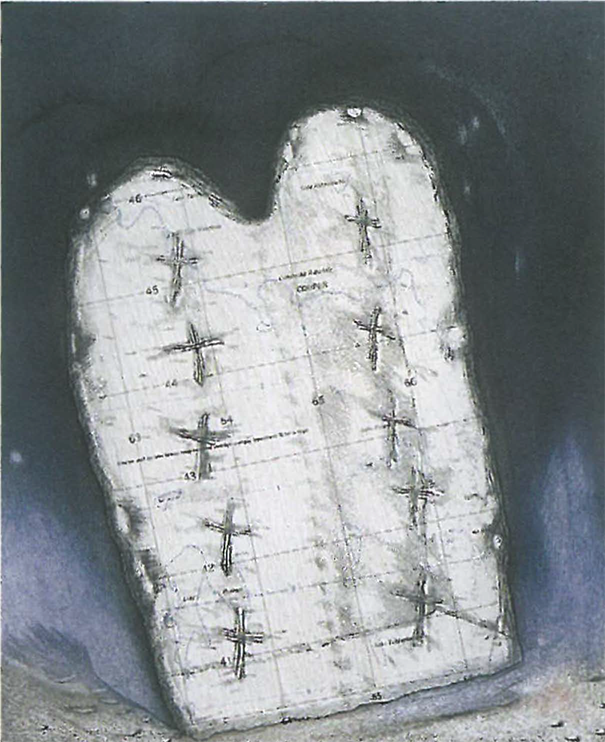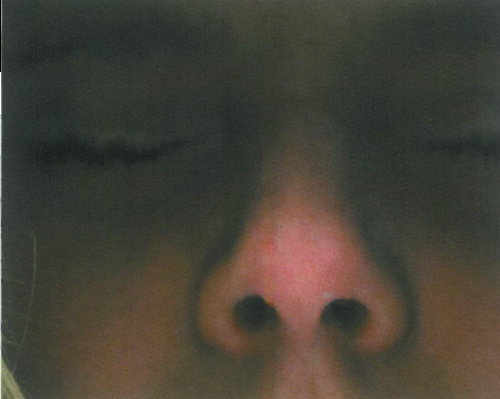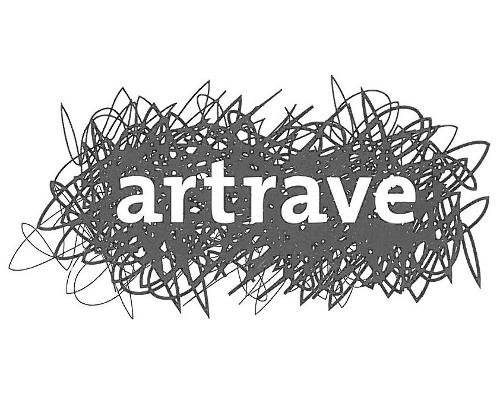
It is rare in these days of so much 'in-your-face' art for subtly to make an impact but that is precisely what the art of Petr Herel achieved in the holmes court gallery in East Perth. His fragile artist books, delicate etchings and mysterious drawings collectively pack a punch. Trained in the Prague Academy of Arts, his work can be considered to have a European sensibility but as he has been resident since 1973 it is also informed by years of experience in Australia. The work is mostly small in scale and finely drawn with attention to detail. It is organic, evoking emergent chrysalises, insect swarms, dried grasses and sloughed skins. It hints at the supernatural with a spiritual presence which stimulates the imagination or leads to more tranquil contemplation.
The artist's books, related to writings of Appollinaire, Michaux and other poets and philosophers, are perhaps the most fascinating of his oeuvre and are fragile and delicate evocations of the texts they illuminate. Most are mysterious, referencing the passing of time, the inevitability of death or some private spiritual reality. They can be viewed in a variety of ways as single images, pairs or even extended open to a frieze.
For instance the silvered Michaux Poems text:
Timid ghost in gossamer, who are you then?
It must have made, that ghost, a sign of chance breeze for I read in the nape of the grass: "I am the Refuge of the bodies dazed by the task of Life."
was accompanied by raised braille-like indentations, impressed through crisp, cream paper of luscious weight, creating delicate shadows to match the gauzy ghost referred to in the text, while Dormal's Le peau du fantome printed on calf-gut in yellow and sepia bore more than a passing reference to a phantom skin.
In Hora Mortis, Billinger's poem featured in an artist's book, containing diagonally handwritten text. Burnt edged perforations pointed up fine lines delineating an angelic body overlaid with a cascade of stars. The fold of the two-page spread was deliberately off centre to counterpoint the symmetry, a device he used on more than one occasion.
Tissu du Temps, a more recent work, also employed delicate burning of the paper to resemble constellations in the sky. However in this piece the artist burnt away part of the text so the viewer had to fill in the missing sections in their mind.
There was delicacy also in Sur le pont Charles in which the raised designs and subtle lines emerged from a striated background, a layering of texture and meaning usually seen in his work.
Work of a different style was inspired by Aristotle's physics book on the essence of place. Embossed etchings and aquatints utilised triangles and St Andrew's crosses against a moonscape background of potholes and shadows with the occasional 'asteroid' appearing to float out from the surface. This optical manipulation of a flat surface had an unsettling visual effect leading the mind to ponder the plurality of the image.
Some of the framed drawings were spreads from books. In I'll be your mirror, a pastel, brush and ink drawing, delicate markings evoked a faded map. This like a number of other exhibits pointed up his explorations of the mirror image - the print - which is obtained from a plate or block.
This is further explored in Regard Metis I & II, a pair of delicate etchings of tablets or tombstones cleft down the middle, and engraved with marks reminiscent of barbed wire. The sepia-toned stones have a monolithic quality and suggest a double reality - the view from both sides of a mirror. They reference an earlier work based on Saint Peter, the rock on which the Christian church is based, and possibly the older biblical tale of the getting of the Ten Commandments.
John Donne's Hymne à Dieu mon Dieu, du fond de ma maladie was a strong image of another tombstone-like tablet inscribed with the crosses representing the ten commandments overlaid by a map of Cooper's Creek. This referencing of the trials of early Australian explorers fused journeys old and the new with the spiritual and the temporal. Herel's work itself is a fusing of old and new techniques, old and new thoughts, old countries and new providing a deep well of thought for those who care to engage with the work.












